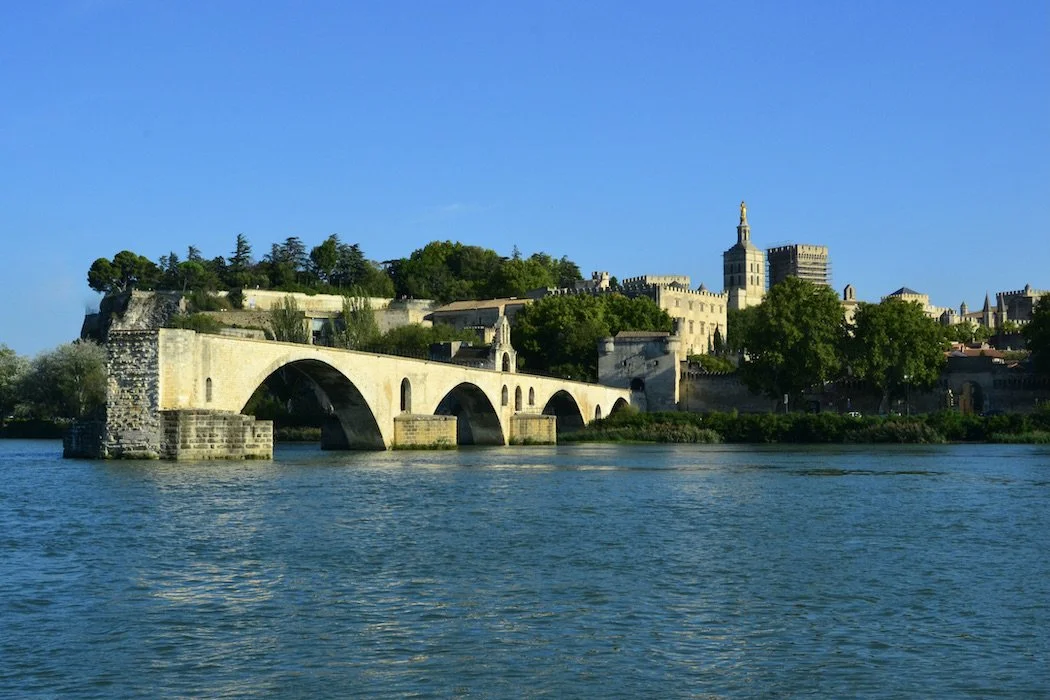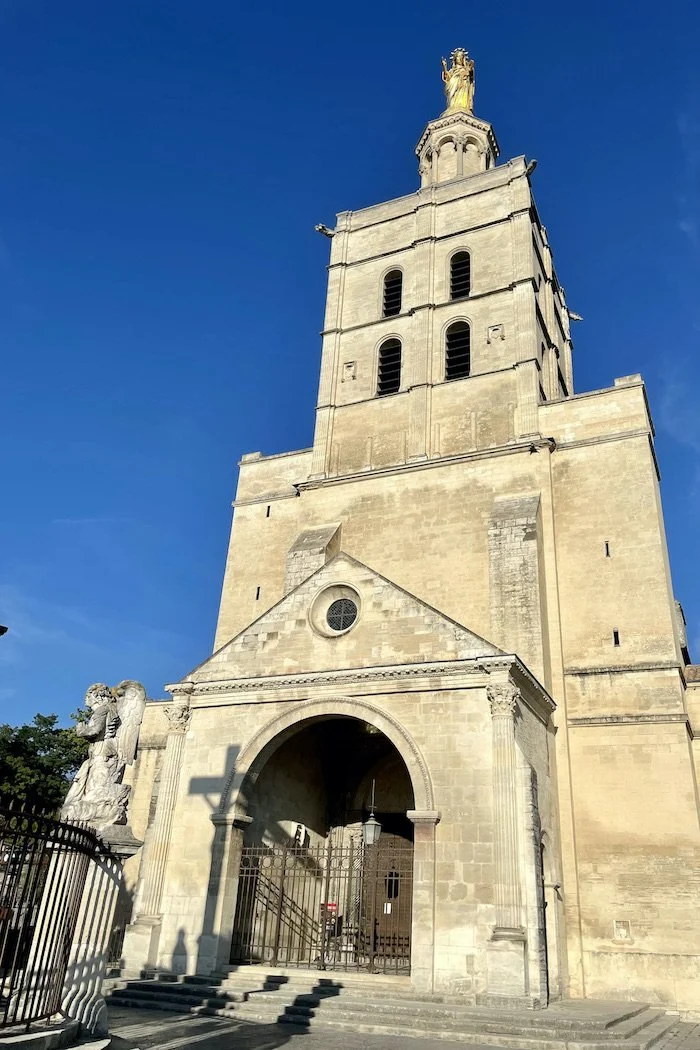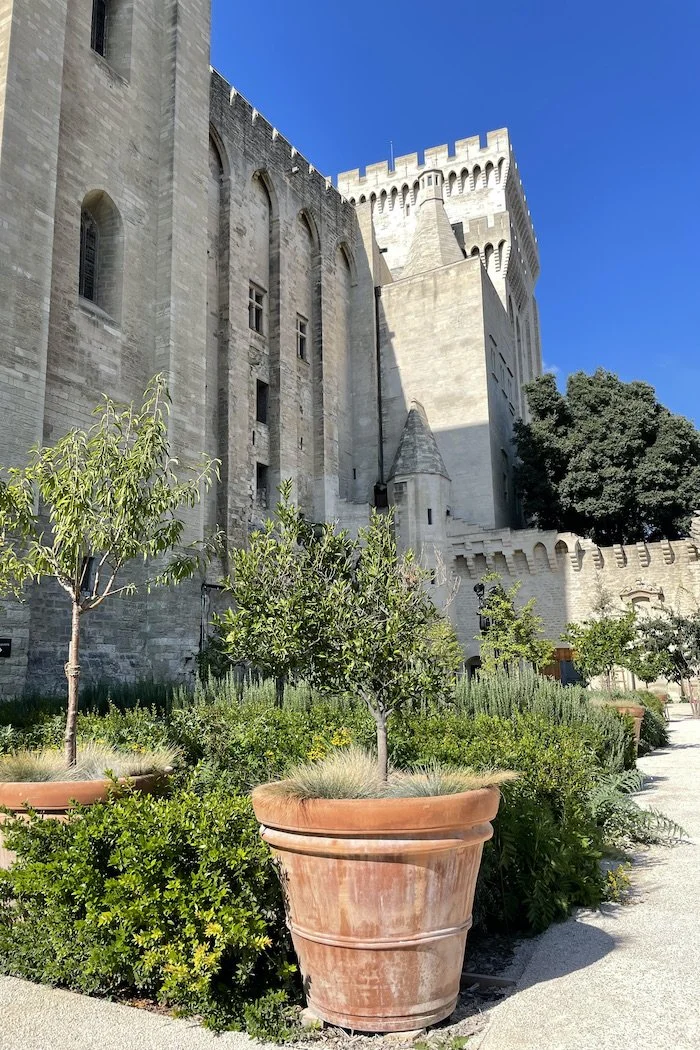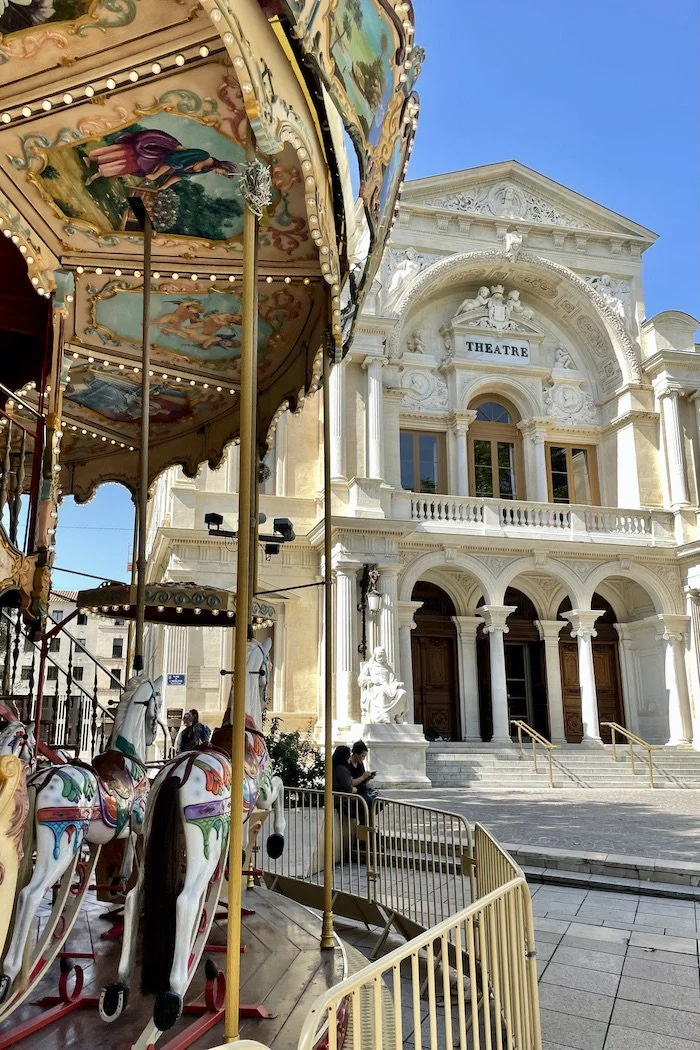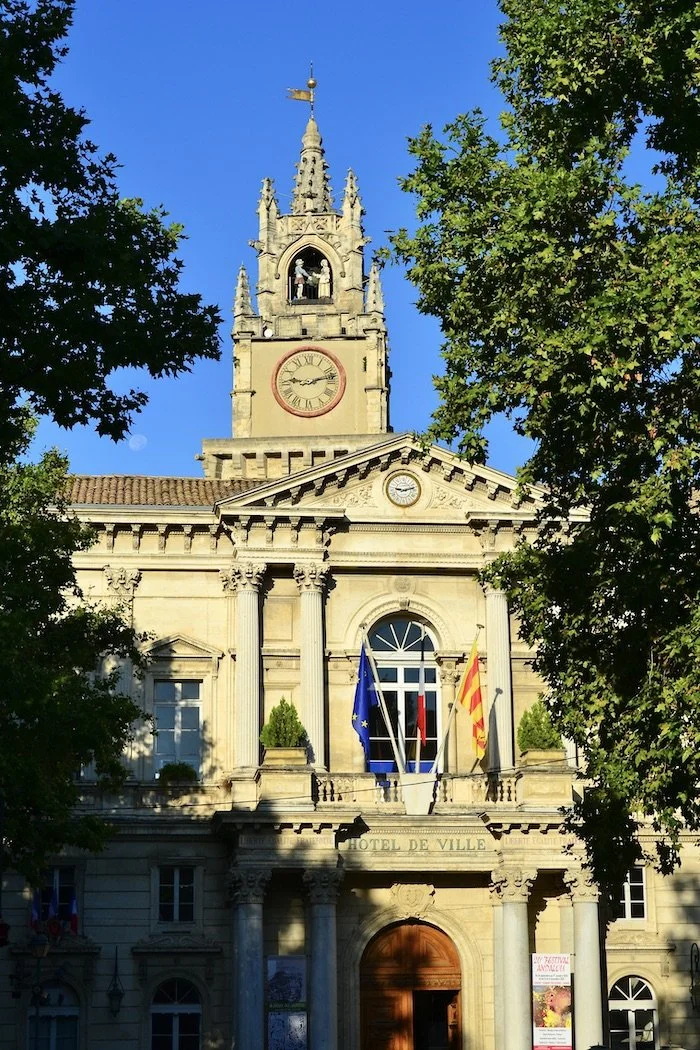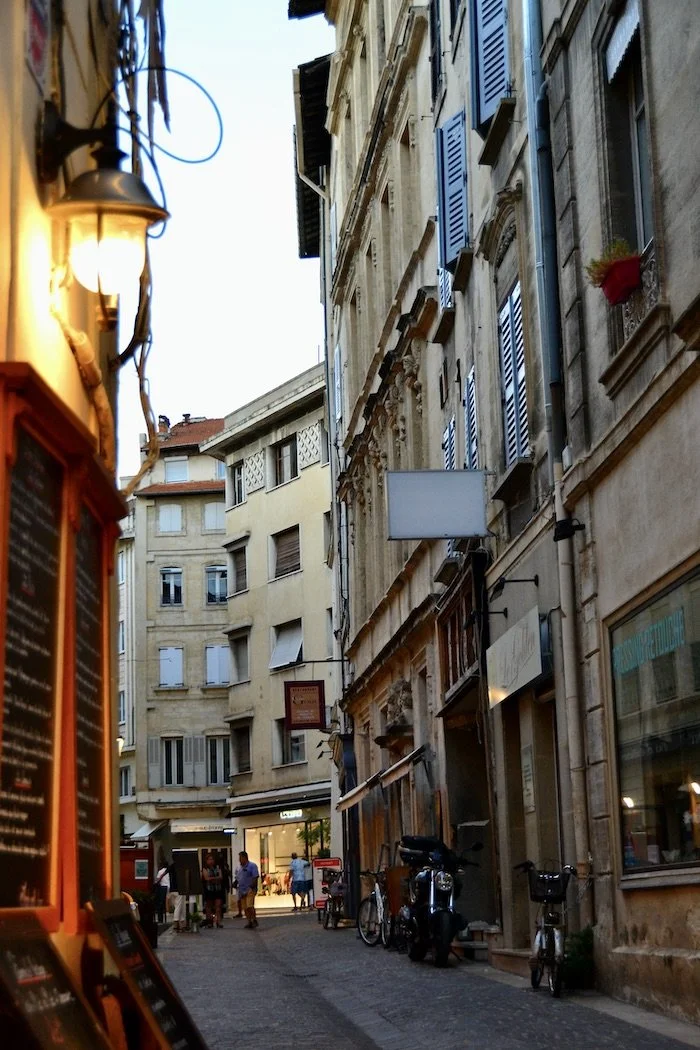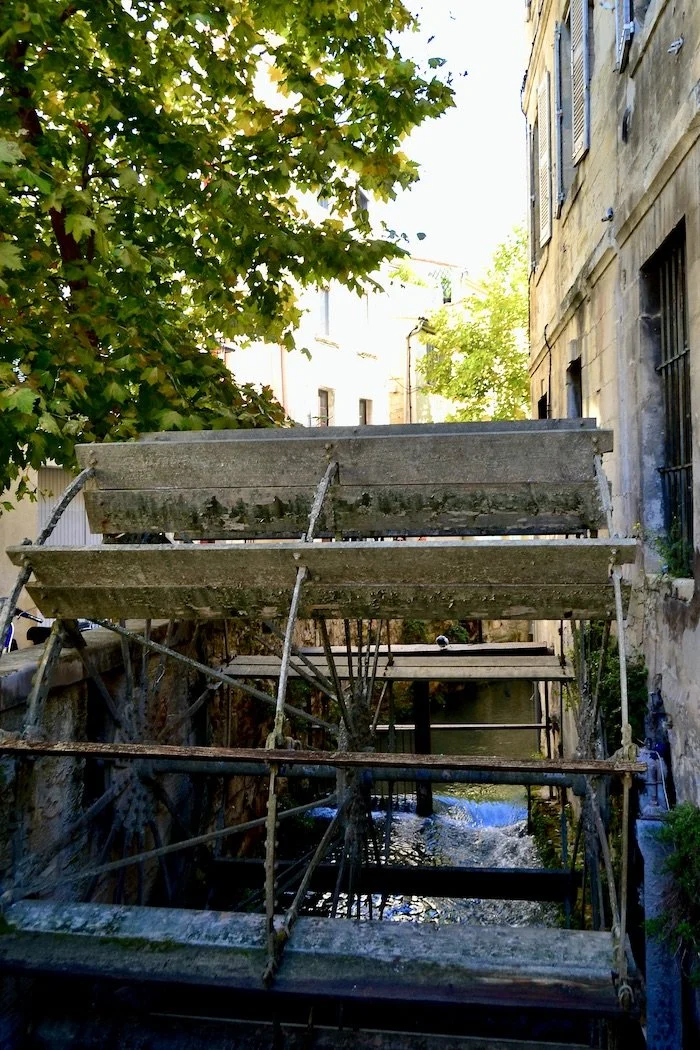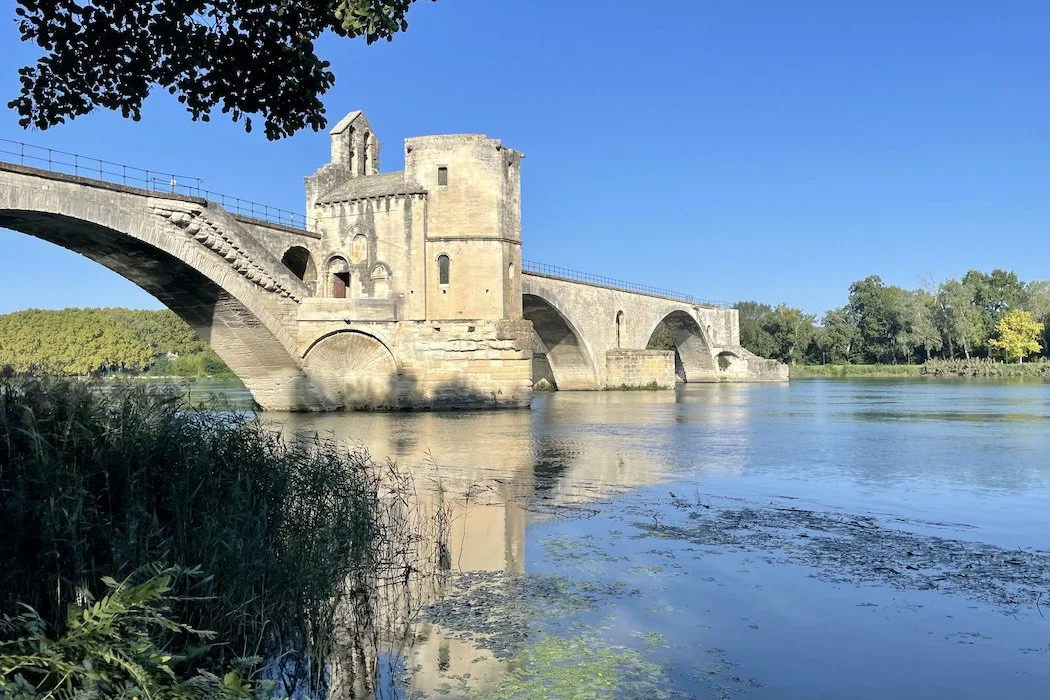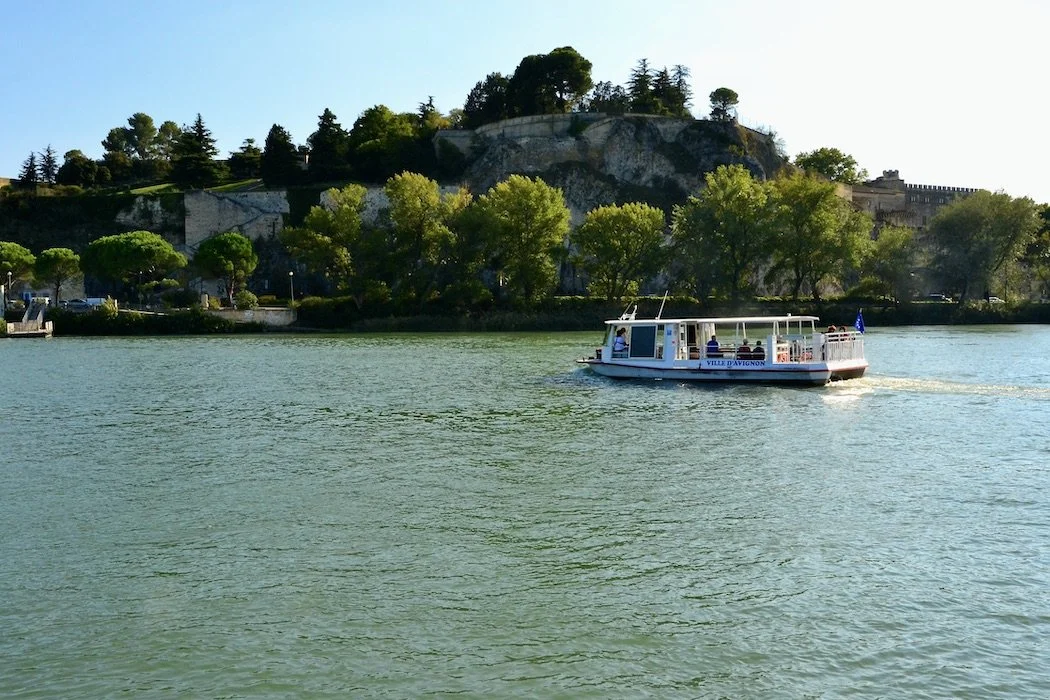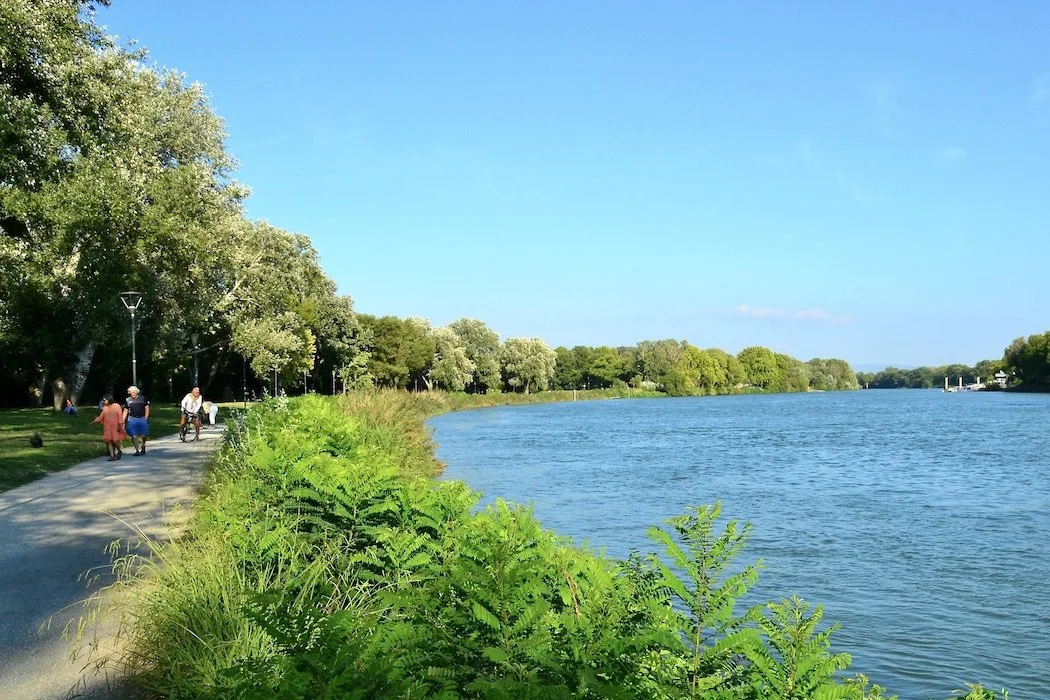Approaching mellow autumn in Avignon
Avignon’s Papal Palace and bridge seen from across the River Rhône
“Autumn’s the mellow time”. — William Allingham
While the French Provençal town of Avignon has famous monuments and a summer festival that attract visitors, there is more to explore in and around this ancient town center enclosed entirely by a 4 km-long limestone medieval wall. In autumn, it’s a place to take a mellow stroll and soak in daily French life.
Avignon is located on the left bank of the Petit Rhône River arm at a riverside elevation called Rocher des Doms. Inhabited for some 5000 years because it’s safe from river flooding, the Rocher was a Greek Emporium around 500 BC, and later became a fortified Roman capital. After a tumultuous early medieval period, Avignon became famous as the Pontifical residence in 1309 under Clement V and remained so for nearly 70 years. Seven successive popes, and two anti-popes during the Great Schism, resided here, building their massive Papal Palace, the adjacent Petit Palais, and the city’s defensive walls complete with 39 towers. Only the Cathedral Notre Dame des Doms, a Romanesque 12th-century church, predates the Avignon Popes on the grand Papal Square.
Yet, other appealing squares beckon for attention, offering rest and relaxation. The oblong, shady main square, the Place de L´Horloge, was built atop a Roman forum and named for the clocktower on the city hall. While the chimes ring the hour, this is a place to linger in mellow autumn weather, when visitors are few. In the early morning, cafes serve coffee and breakfast, and later the carousel in front of the Theater begins to spin, carrying small children. The Place Pie is the city’s dynamic spot from 6:30 AM when stalls open in the daily market, Les Halles, until late in the evening when young people and students gather festively at the cafés.
Avignon’s walls contain numerous smaller picturesque squares, many anchored by historic churches, and the countless atmospheric streets that connect them. One of the most unique streets is Rue des Teinturiers (Street of Dyers) that follows a watercourse called Sorguette. Originally diverted from a river to feed a moat that surrounded the defensive walls, it ran the waterwheels that served the centuries-long textile industry. Now, inviting restaurants shaded by sycamore trees line the canal in this delightful neighborhood of independent theaters and booksellers.
The town’s lifeblood, the River Rhône, is so wide here that Barthelasse Island divides the two arms. Free and frequent cable ferry service from the base of Rocher des Doms, just outside the walls, takes locals and visitors across to the island’s park where favorite pastimes include walking, biking, picnicking, and visiting outdoor restaurants Longer boat tours of 1-2 hours depart from the cityside queue alongside the Allées de L’Oulle. The river’s prominent feature is the Pont d’Avignon, famed through the French song. Its real name is Saint-Bénezet Bridge for the Romanesque chapel that stands on one of 4 remaining piers. This remarkable bridge once had 22 arches spanning both arms of the Rhône and the island in between before they washed away in the 1600s.
Don’t Miss:
A walk on top of the remaining portion of the Pont d’Avignon over the River Rhône at morning opening time.
Lunch Tip:
Pick up all the makings of a typical Provençal lunch at the covered market, Les Halles, and enjoy them on a bench in the adjoining Place Pie.
Bedtime:
Hotel de l’Horloge, a small, independent hotel next to City Hall on the Place de l’Horloge.
Subscribe for inspiration to have my posts drop directly into your inbox. *If you enjoyed what you read, please share this post with like-minded travelers.*
*All photographs are mine, taken with my Nikon D3100 or iPhone 12 Pro.*

